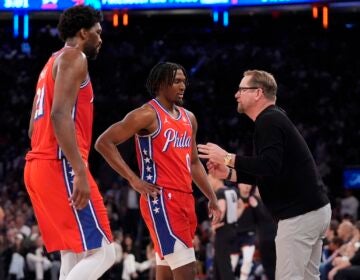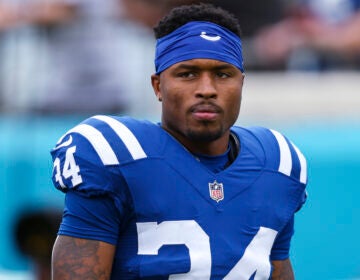Rhyme, reason and much more behind names of Philly streets
When I think of interesting street names, I have to go back to the seed that grew into my book.
My son Peter was an energetic child and, when he got too energetic, his mother would hand him over to me for what today they call “quality time.”
One of my favorite haunts was around Independence Hall. Peter was completely in thrall of the Liberty Bell, saying it had “a crack and a crapper.” One day, we were outside our house on Waverly Street in Center City when he asked, “Why is our street called Waverly?” I didn’t know, so I lied and said: “It’s the way the street was laid out.” I was ashamed and had to square myself with my first-born. I dug and dug, and found out the name came — with a typographical error — from Sir Walter Scott’s “Waverley Novels.”
That led to “Street Names of Philadelphia,” and the dubious honor of having written the first book-length description of the mechanics of naming a town. So, I guess Waverly would be one of my favorites.
Living downtown for more than two decades, my selection leans heavily in that direction.
Callowhill. William Penn wanted the streets of his settlement to bear the names “of things that grow and are native to the land.” I never heard of a Callowhill tree; have you? Penn named it for Hannah Callowhill, his second wife. Guess he found that more pleasant than sleeping on the sofa! You have to give him credit. In 1690, he labeled it “New Street.”
In old Southwark, we find Christian Street, named not for the religious denomination but for Sweden’s Queen Christina. Guess the namers didn’t think it appropriate to put her name up on a sign. Nearby Queen Street allows her some time in the spotlight.
A little farther south, we find Moyamensing, so-named by the Lenni-Lenape tribe for “the place of pigeon droppings.” The name was quite apt; for a long time, it was the site of Moyamensing Prison. I’m sure it housed its share of stool pigeons. The prison was razed and an Acme replaced it.
I’ve always loved Shackamaxon, which translates as either “meeting ground of chiefs” or “eels.” At least that’s what Chief Half Town, a children’s TV personality of the ‘60s, said of the name.
We can’t ignore the litany of governors’ names down Broad Street. Those guys — from Mifflin to Pattison — are all but forgotten, except in street signs. A serious Philadelphia historian may note the absence of two governors: Joseph Hiester and John A. Shulze. I always wondered why they were ignored.
The second edition of my research was titled “Mermaids, Monasteries, Cherokees and Custer.” From its location, it is impossible to see any body of water near Mermaid Lane. The name came from a 1795 hotel, a popular watering hole. The street namers delighted in remembering taverns — “bars,” in today’s language — including Black Horse Alley.
Sometimes, while doing the research, I wondered about the street-namer’s reasoning, such as naming Taney Street for the Supreme Court justice most notably remembered for the Dred Scott decision.
Another fascinating name is Arch Street, where there is no arch. In 1690, three men petitioned the Provincial Council to allow them to build a bridge over Mulberry Street — the street wasn’t even. When completed, it was 66 feet long, a major engineering feat. Residents referred to it as “the great arch” and “the arch street.” The arch was torn down in 1721, but the name remained.
My all-time favorite street, however, is not in Philadelphia. My daughter Amy wrote a book on the streets of Washington. While doing her research, she became friendly with a supervisor in the streets department and had him make a special sign for me: ALOTTA BOULEVARD!
—
Dr. Robert I. Alotta is author of the ground-breaking “Street Names of Philadelphia,” “Mermaids, Monasteries, Cherokees and Custer: The Stories Behind Philadelphia Street Names,” and almost 20 other non-fiction works. His work has appeared in all Philadelphia newspapers. An updated “Street Names” is planned by Temple University Press.
WHYY is your source for fact-based, in-depth journalism and information. As a nonprofit organization, we rely on financial support from readers like you. Please give today.




